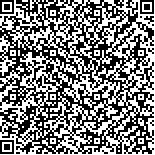王阳,黄钰铭,王鹤玮,等.重复经颅磁刺激联合重复外周磁刺激对脑卒中后偏瘫患者肩痛的影响[J].中华物理医学与康复杂志,2025,47(3):221-225
扫码阅读全文

|
| 重复经颅磁刺激联合重复外周磁刺激对脑卒中后偏瘫患者肩痛的影响 |
|
| |
| DOI:10.3760/cma.j.cn421666-20240531-00416 |
| 中文关键词: 重复外周磁刺激 重复经颅磁刺激 脑卒中 偏瘫肩痛 |
| 英文关键词: Peripheral magnetic stimulation Transcranial magnetic stimulation Stroke Hemiplegia Shoulder pain |
| 基金项目:陕西省中医药管理局科研基金项目(SZY-KJCYC-2025-LC-028) |
|
| 摘要点击次数: 1947 |
| 全文下载次数: 1916 |
| 中文摘要: |
| 目的 探讨重复经颅磁刺激(rTMS)联合重复外周磁刺激(rPMS)对脑卒中后偏瘫患者肩痛的影响。 方法 选取脑卒中后偏瘫肩痛患者60例,采用随机数字表法将其分为中枢组、外周组、联合组,每组20例。3组患者均接受常规药物治疗和康复训练,在此基础上,中枢组在患侧半球M1区采用10 Hz rTMS,外周组在患侧肢体Erb点采用20 Hz rPMS,联合组先进行rTMS,后进行rPMS。治疗前、治疗2周后及治疗4周后,分别用数字疼痛评分法(NRS)、被动关节活动度(PROM)、Fugl-Meyer量表(FMA)上肢部分评定3组患者的疼痛程度、肩关节活动度、上肢运动功能。 结果 治疗前,3组患者的NRS评分、肩关节PROM、上肢FMA评分比较,差异无统计学意义(P>0.05)。与组内治疗前比较,3组患者治疗2周后及4周后的NRS评分降低、肩关节PROM及上肢FMA评分增加(P<0.05),且组内治疗4周后的NRS评分较治疗2周后进一步降低(P<0.05)。组间比较发现,联合组治疗2周后[(1.90±0.97)分]、4周后[(0.65±0.67)分]的NRS评分较低,治疗2周后及4周后的肩关节PROM较大(P<0.05)。联合组治疗2周后的上肢FMA评分[(36.10±13.32)分]显著高于中枢组(P<0.05),治疗2周后及4周后的上肢FMA评分显著高于外周组(P<0.05)。中枢组与外周组治疗2周后、4周后的NRS评分、肩关节PROM、上肢FMA评分比较,差异均无统计学意义(P>0.05)。 结论 rTMS与rPMS均能有效缓解脑卒中后偏瘫患者的肩痛症状,并促进上肢运动功能恢复,且两者联合应用的效果更佳。 |
| 英文摘要: |
| Objective To document any effect of combining transcranial magnetic stimulation (rTMS) with peripheral magnetic stimulation (rPMS) to relieve shoulder pain in hemiplegic stroke survivors. Methods Sixty hemiplegic stroke survivors with shoulder pain were randomly divided into a Central Group (n=20), a Peripheral Group (n=20), and a Combined Group (n=20). In addition to routine pharmacological intervention and rehabilitation training, the Central Group received 10Hz rTMS over the M1 area of the affected hemisphere, the Peripheral Group received 20Hz rPMS at Erb′s point of the affected limb, while the Combined Group received rTMS followed by rPMS. Before as well as after 2 and 4 weeks of treatment, all were assessed using a numerical pain intensity rating scale (NRS), for passive range of motion (PROM) of the shoulder joint, and using the Fugl-Meyer upper extremity assessment (FMA). Results Before the treatment there were no significant differences among the 3 groups. After 2 weeks there was significant improvement in the average shoulder PROM and FMA scores, and a significant decrease in the average NRS ratings. After 4 weeks there was continued significant improvement. After 2 and 4 weeks, the Combined Group gave significantly lower NRS ratings than the others and had greater average shoulder PROM improvement. The average FMA score of the Combined Group (36.10±13.32) after two weeks was significantly better than those of the Central and Peripheral groups. However, no significant differences were found between the Central and Peripheral Groups in the other measurements. Conclusions Both rTMS and rPMS can relieve shoulder pain and promote the recovery of motor function, with superior synergistic effects observed in their combined application. |
|
查看全文
查看/发表评论 下载PDF阅读器 |
| 关闭 |